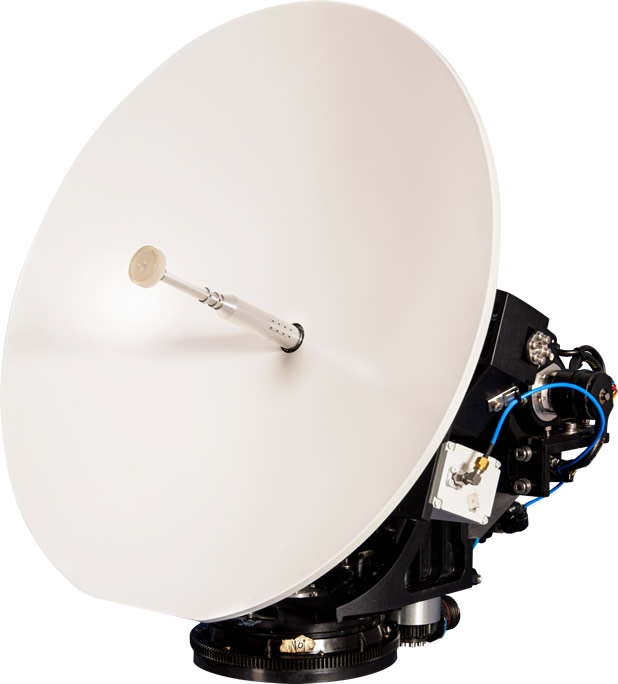The challenge: A United States Department of Defense (DoD) customer was seeking to migrate their airborne Intelligence, Surveillance and Reconnaissance (ISR) solutions from a wide-body aircraft to a more modern, smaller aircraft. This migration had to improve mission flexibility and efficiency while reducing the number of crew members on the aircraft. Global commercial and military (Mil) Ka-band access was required, and SATCOM services had to operate at higher rates and efficiencies than the previous wide-body aircraft solution (over two times faster).
The solution: Meeting the Customer’s need required a terminal that could be accommodated in the small space available on a business jet while providing excellent satellite link performance – requirements that were in tension. The Inmarsat Government team arranged for and oversaw a development program for a new aero terminal with Orbit, an Inmarsat value-added manufacturing partner. The resulting terminal, the GX46 airborne SATCOM terminal, was developed and achieved Inmarsat type approval for use over the Global Xpress (GX) and Mil Ka-band steerables network. After the successful integration of the antenna in the launch customer’s SIL (System Integration Lab), the customer decided to outfit their entire fleet with this highly capable aero terminal and employ GX services–a remarkable accomplishment and testament to the GX46’s value. Today, there are three customer fleets that have selected this aero terminal as their way forward.
The benefits: The GX46 is a modular, multi-role terminal that operates across commercial and Mil Ka-bands through a 46 cm antenna. This terminal is fully integrated with modems, electronics and software required for SATCOM. The lightweight, small-footprint terminal satisfies the low size, weight and power (SWaP) and high-throughput receive and return requirements. It brings worldwide connectivity, supporting the full range of Ka-band frequency bands through Inmarsat’s GX satellite coverage, Inmarsat’s mil band steerable antennas, or via Wideband Global SATCOM (WGS) system. The terminal is electronically switchable between systems and bands via Automatic Beam Switching (ABS) using industry standard OpenAMIP protocol, ensuring seamless operations.
The GX46 works with Inmarsat latest innovations such as G-MODMAN II to support the next generation of GX aero terminals across multiple aero platforms. It is considered a ‘Swiss Army’ knife of terminals because it is fully compatible with multiple satellite capabilities – GX, WGS and high-capacity beams for Mil Ka-band.
With substantially lower total cost of ownership (TCO), the DoD customer can now reduce the size of the aircraft and flight crew using the new modern and smaller aircraft while improving operational capabilities. In addition, the customer achieves cost savings due to lower fuel consumption and more crew members available for ground operations.

